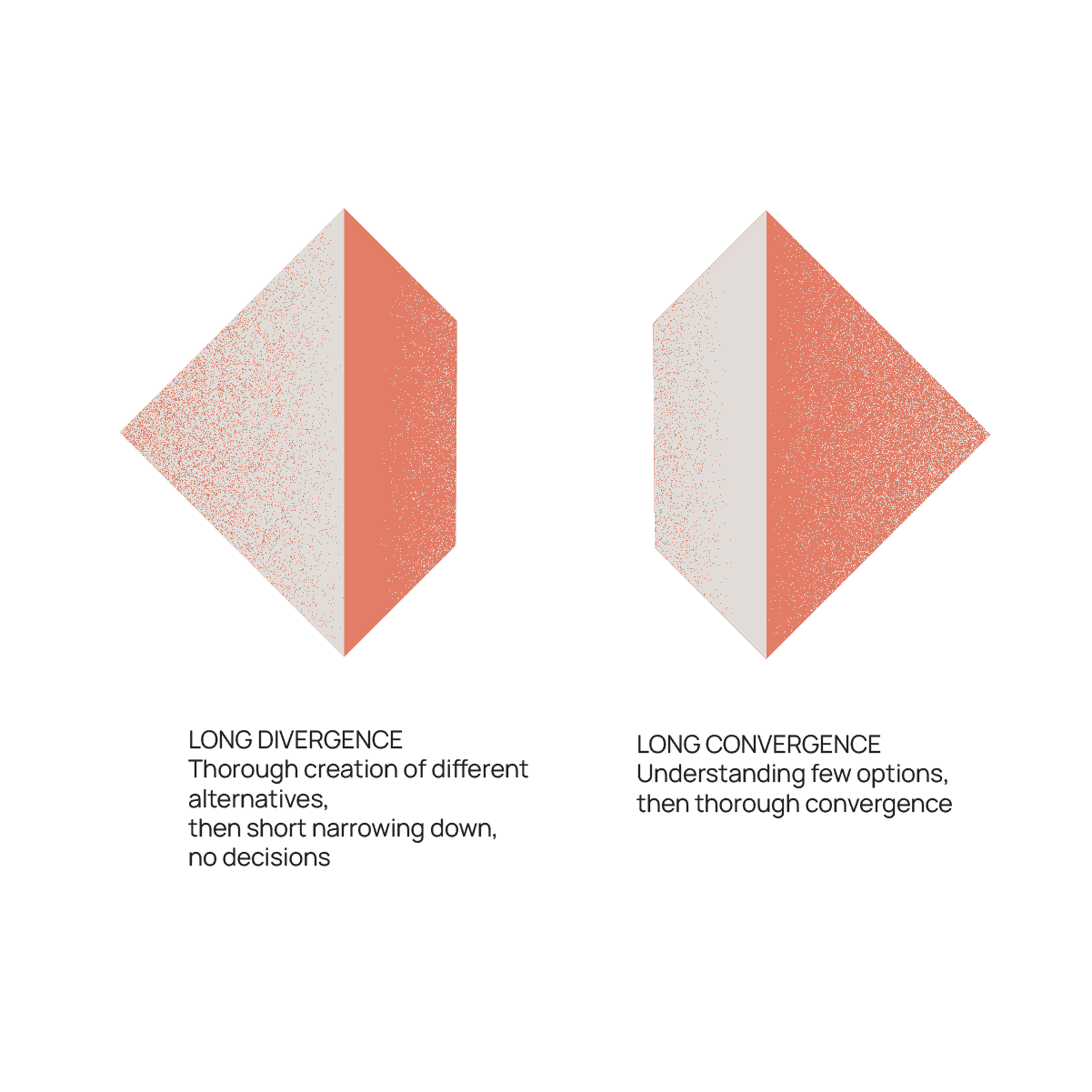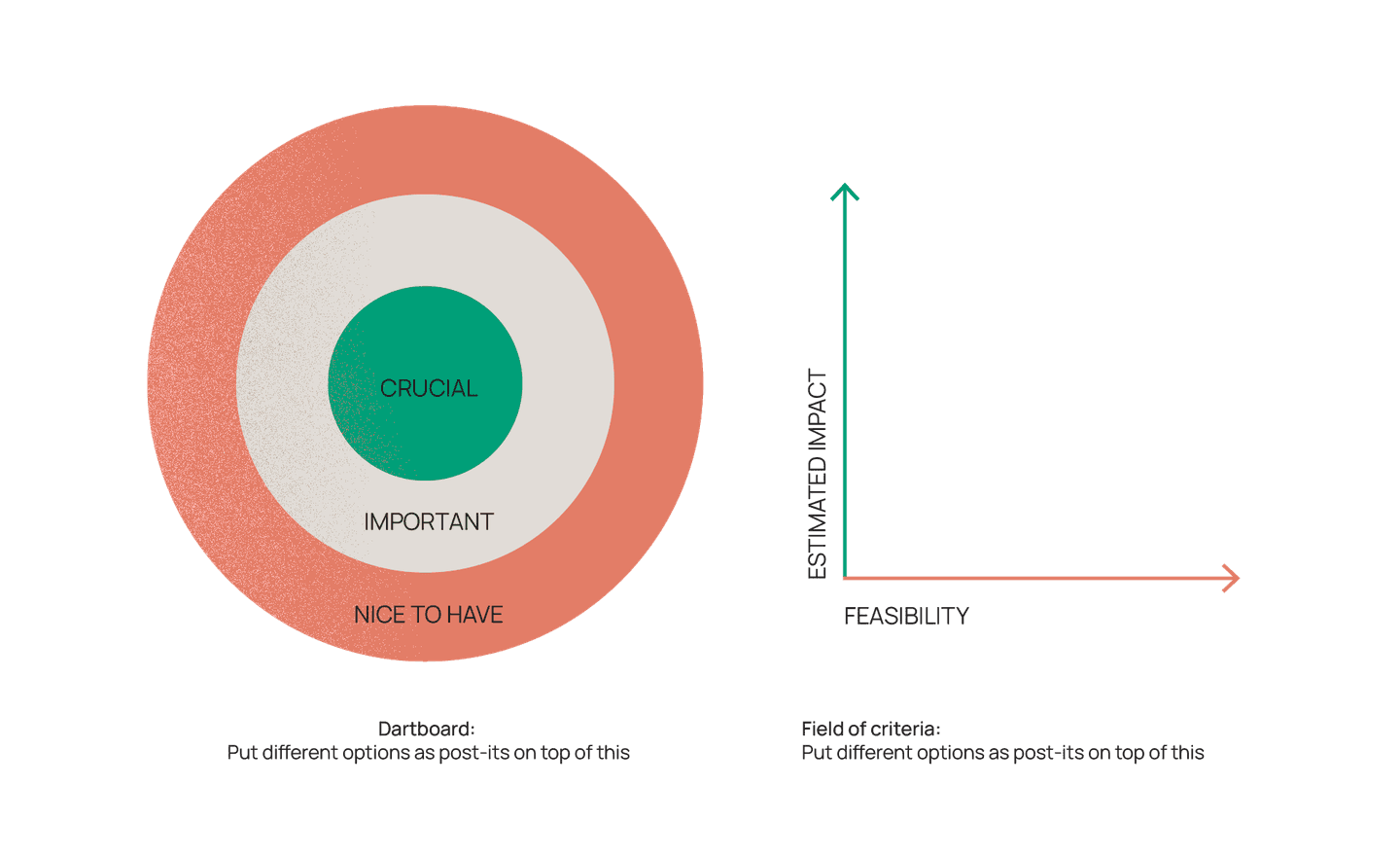Stop making poor-quality decisions as a team
If you want to empower your management team to make high-quality decisions, you need to consider a wide variety of perspectives. To do this without creating a total mess, you need to facilitate dialogue around data, increase awareness of significant biases in thinking, and ensure that creative ideas that challenge conventions are not killed when making strategic decisions.

Group decision-making challenges
Let’s look at some practical tips for facilitating high-quality, strategic and data-driven decisions in management meetings. Good group decision-making is about connecting innovative use of data and managing the group dynamics of people discussing it together. I’ll focus on the people side of decision-making: how to create a common understanding of alternatives and how you can guide the group to reach a decision together. While new real-time data and AI solutions are useful for decision-making, they are complex, and the skills to facilitate dialogue are increasingly crucial.
To improve decision-making, we must first understand and prioritize what problem we are actually trying to solve. Based on my own experience, the most common challenges include
- An overly optimistic idea of what can be done in an hour. As a result, time runs out at the end of the meeting.
- The assumption that everyone agrees when only the loudest person says yes.
- A lack of effective methods for handling group dynamics results in the inability to take advantage of all the expertise in the room and a lack of commitment to the decisions made.
- The mixed abstraction levels of different options needlessly complicate choices.
- A lack of relevant information.
- Fear of resistance, judgment, or failure
Decision-making structures, leadership systems, data architecture and capabilities, and different elements of organizational culture also play a role in making successful strategic data-driven decisions, but in this article, I’ll focus on what you can do in a decision-making situation.
Solution 1: Slow down convergent thinking
Guiding groups in making decisions is a core competence of any facilitator. A typical element of a group process is described as a “diamond” that has an equal amount of time for divergent and convergent thinking. In a meeting, you might have several topics. Open each topic up for discussion, develop alternatives (divergence), narrow options, and make decisions (convergence). Too much emphasis on divergence and time running during convergence is a typical problem in many meetings and workshops.

When you need more alternatives and out-of-the-box thinking, spend more time diverging in various ways. A break to incubate ideas between diverging and converging is recommended – anywhere between an hour and a few days. If the time is limited, keep divergence short. Finishing early and finding a new time to continue is better than trying to stretch the meeting.

When you want to reach a decision that is well thought out and accepted by all decision-makers, you need to spend more time on converging. Slow down convergence by going through these steps.
- Create a shared understanding of the options and the system around them
- Choose criteria and narrow down options
- Conduct an analysis of the chosen options and discuss possible outcomes
- Prioritize options and evaluate (e.g., feasibility vs. impact)
- Make a choice, check consensus/commitment and iterate if needed
- Clarify and document what has been decided, and communicate which assumptions it’s based on and what the desired outcome is
Not all situations need to go through all the steps, but using only one or two steps may result in poor-quality decisions. It's important to keep in mind that there are alternatives to just voting or, even worse, unintentionally letting the loudest decide.
With the hectic meeting schedules of everyday working life, helping groups see the systemic level of issues is challenging. Lack of systemic thinking can lead to unintended consequences, sub optimization, missed opportunities, and new problems. Too often, facilitators begin by asking groups to create and cluster ideas when they should ask people to create and prioritize key questions.
Management team meetings often deal with a wide variety of topics – some strategic, some tactical, and some operational decisions. This makes it difficult for group members to catch the right level of abstraction and time span. Keep strategic discussion separate from operational matters. We should always address the right problem at the right time on the right level.
When you prepare a meeting, evaluate each topic at hand: is it a problem to be solved or a polarity to be managed? These require very different approaches to decision-making. Have the courage to apply non-linear thinking and foster it with pauses that enhance incubation: you can diverge in one meeting and converge in another.
Solution 2: Use effective facilitation methods
Many decisions in management team meetings are made without any method; people just discuss matters, and at some point, the meeting leader concludes the decision. This way of making decisions emphasizes the impact of the loudest person in the room. In the end, all members of the group may not agree with or commit to the decision.
Facilitating a converging discussion involves checking that everyone has had a say and that the options are spelled out so that everyone can see them. Different voting methods are also common, but they all have a fundamental problem: when voting, some people win, and some lose. It hinders commitment and can emphasize silos instead of the feeling of making a choice together and sharing responsibility.
When narrowing down options, you can avoid the “loudest decides” issue by asking people to think about the decision alone, discussing it with another person, and then one more person. After discussions in pairs or small groups, people have more courage to bring their opinions into the larger group discussion. This method is called me-we-us. It is one of the simplest facilitation methods, yet rarely used in management team meetings. It prevents the group discussion from anchoring to the first point of view presented and encourages more viewpoints to surface.
Idealogue is a similar method. It structures narrowing down options in a way that motivates people to listen to each other's ideas, develop them further, and come up with shared ideas that more people experience as their own. Combine it with Dartboard or Field of Criteria to clearly visualize the outcomes.

Simple convergence methods
- Me-we-us and voting variation: Choose on your own, conduct pair discussions where you try to influence the other person, vote in pairs (e.g., with dots), and discuss with the whole group
- Dartboard and silent maneuvering combo: Options are written on post-its on a parking lot on the wall. Anyone can move any Post-it to any area on the dartboard poster/digital template. No discussion or comments are allowed. Post-its can move back and forth. After about 10 minutes, the group discusses priorities.
- Me-we-us and Field of Criteria combo: Individuals ponder options, their feasibility, and potential impact. Options are discussed in small groups and placed on a field of criteria poster. The whole group discusses which options to choose for further analysis and development.
- Five-finger check: Ask the group members to show one to five fingers to express how committed they are to the decision. Five is very committed, and one is definitely not committed. Ask some or all people to explain their grades. Then iterate the decision if necessary: “What needs to be changed so that you could give three instead of a two?” If you change the decision, perform a new five-finger check. This can be done in online meetings by writing a number in the chat.
Choosing a well-communicated and familiar option is easy; understanding other peoples’ points of view can be challenging even when using me-we-us. Great facilitation methods are available for clarifying complex topics, finding the right abstraction level, and mapping the system around the topic at hand. Methods such as Dynamic Facilitation, Appreciative Inquiry, Challenge Mapping, or Polarity Management can be used when the topic is complex or emotional. These methods provide structure for thinking and talking together.
- Dynamic facilitation: Talking about facts, concerns, key questions, and solutions. The discussion is recorded on the wall or digital whiteboard.
- Appreciative Inquiry: An approach based on positive psychology, exploring previous successes and building on top of these.
- Challenge mapping: Finding the right abstraction level and key question by listing “How might we?” questions, discussing why they are important and what’s stopping us.
- Polarity management: A systemic thinking method to find the right balance between two interconnected things, e.g., local and global production or rewarding teams and individuals. It highlights the bigger purpose and hidden fears and helps recognize warning signs of losing the desired balance.
Solution 3: Creative use of different sources of relevant information
Imagine if the management team could be presented with almost real-time information about, for example, what kind of competencies competitors are investing in or how the behavior of their own personnel has changed. It would enable data-oriented and well-structured discussions to streamline and focus the business.
The opportunity to use data and AI to gain insights about a specific problem is so inspiring that we are at risk of forgetting the human aspect. Emotions and intuition are also sources of information. They convey to us a message that we need to listen to alongside data. Note that people tend to present their opinions as facts and are likely to spend more time discussing easy questions than dwelling on mentally uncomfortable matters. We also tend to pay more attention to information that supports our own assumptions and experience.
When preparing for the decision-making meeting, you must prepare the process, methods, and content. Content preparation can be a divergence-focused workshop or a desk study and data research. Often decisions are made based on pre-defined options.
Saying “no” is also a decision and has consequences. If you bring in options to choose from, try to describe them on the same abstraction level. Usually, the no-go option is not described as thoroughly as others.
Solutions to using data in decision-making in an iterative way
- Define the objective or use case. Ask what information we need to make this decision. Turn that into a set of data research questions.
- Identify what data is needed and check possible data sources, and what is feasible to get with the resources available. Examples of sources: financial reports, BI reports, public data about open positions and patents, research and publications, specialist interviews, observations of behavior, documents, and online discussions, and internal digital footprints of calendar and hour markings. If some information isn’t available, you can proceed with assumptions. Just keep in mind that they are assumptions, not facts. Use different sources of information and try to get a holistic picture. Access to a variety of perspectives is one of the biggest value adds of engaging larger groups of people in strategic discussions. Participants also learn about alternative viewpoints, which makes it easier for them to understand that their opinion is not the only one that counts.
- Get the data and derive insights, in person or with the help of AI tools. Identify patterns, trends, and correlations. Visualize findings into a format that can be used in discussions. Don’t rely too heavily on information that is easiest and fastest to get. Push the limits of what we don’t know that we don’t know.
- Dialogue and collaboration create a holistic shared understanding of the data-driven insights and their implications with the methods explained above. Connect people’s experiences, feelings, and intuition with the data. Reveal opportunities and potential risks. Validate assumptions and data findings by cross-pollinating insights from different sources. Make it easier to express emotions and intuitive choices. Try to separate opinions, guesses, and facts.
- Learning and iteration. Adjust methods, refine the analysis, try out different questions and sources of information, and repeat steps 1-4.
Solution 4: Finding the courage to experiment and learn
Sometimes when I look at the vision statements and strategies of different companies, they seem rather alike, and I wonder if there is enough courage to break the rules. Are some choices made just because people don’t want to be blamed for making a bad decision? It’s easier to make a decision that seems acceptable and culturally compatible than to challenge convention.
There is so much information around us – and yet there are things about which we have no information. Experiments are a way of getting that missing information. At the same time, experiments can mitigate risks and help foresee outcomes.
How to increase courage:
- Before making a final decision, play with wilder options, explore, and even run small tests. Use experimentation to learn faster what the right track is.
- Gather evidence and counter-evidence from different data sources
- If possible, reserve funding for at least two tests. When people know that there will be a second chance, they have more courage to take risks in the first place.
- Don’t call it a decision; call it a bet.
If you are interested in reading more about how to respond faster to changes in the operating environment and stay competitive by making your strategy process more adaptive, or about why and how to engage a wider group of people in strategy work (link), check out the previous articles at Futurice’s blog.
We can help you make good strategic decisions and drive them forward in a co-adaptive way. To discuss further on this, write to me at piritta.vanderbeek@futurice.com
 Piritta van der BeekPrincipal Advisor
Piritta van der BeekPrincipal Advisor


